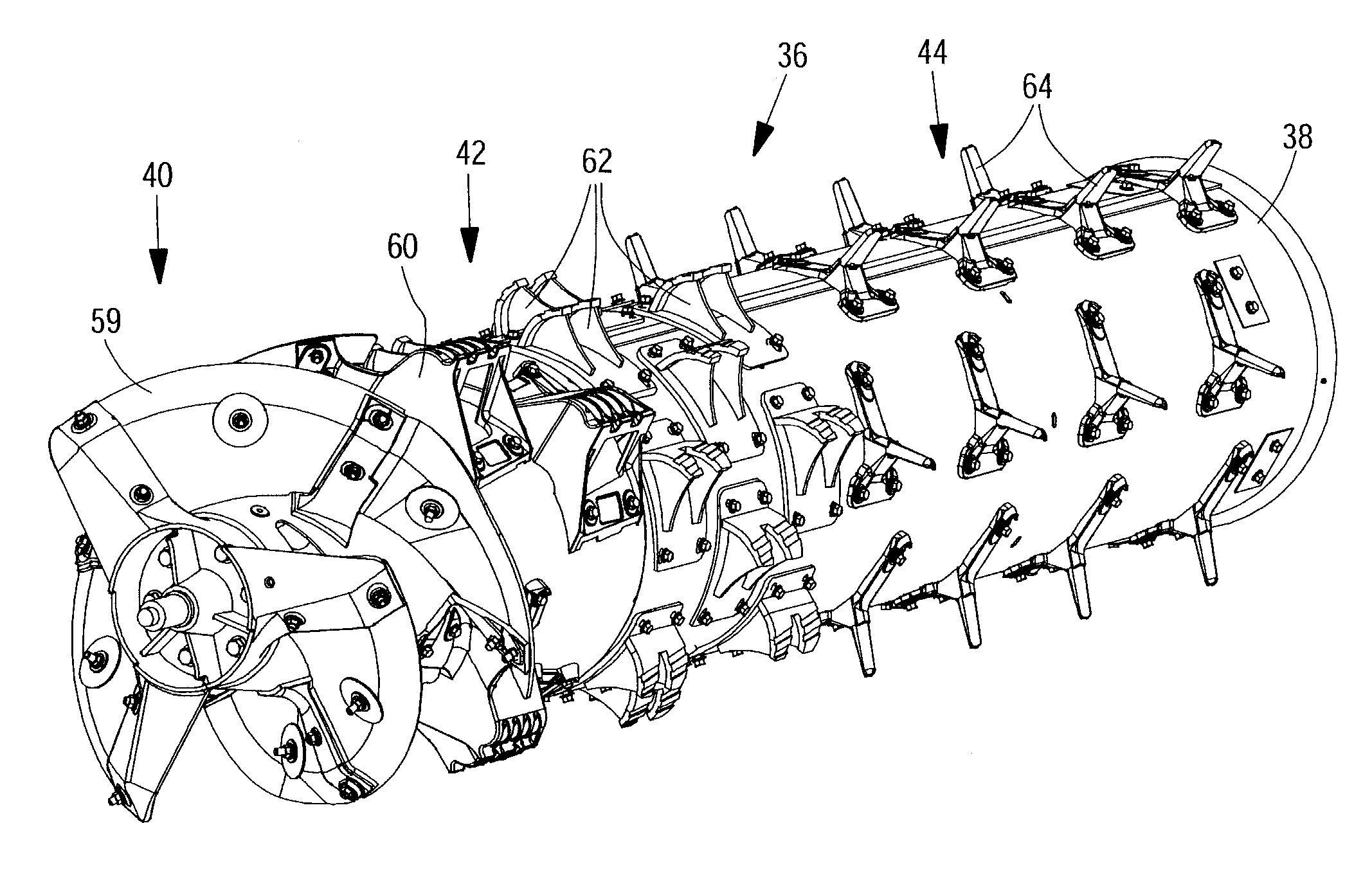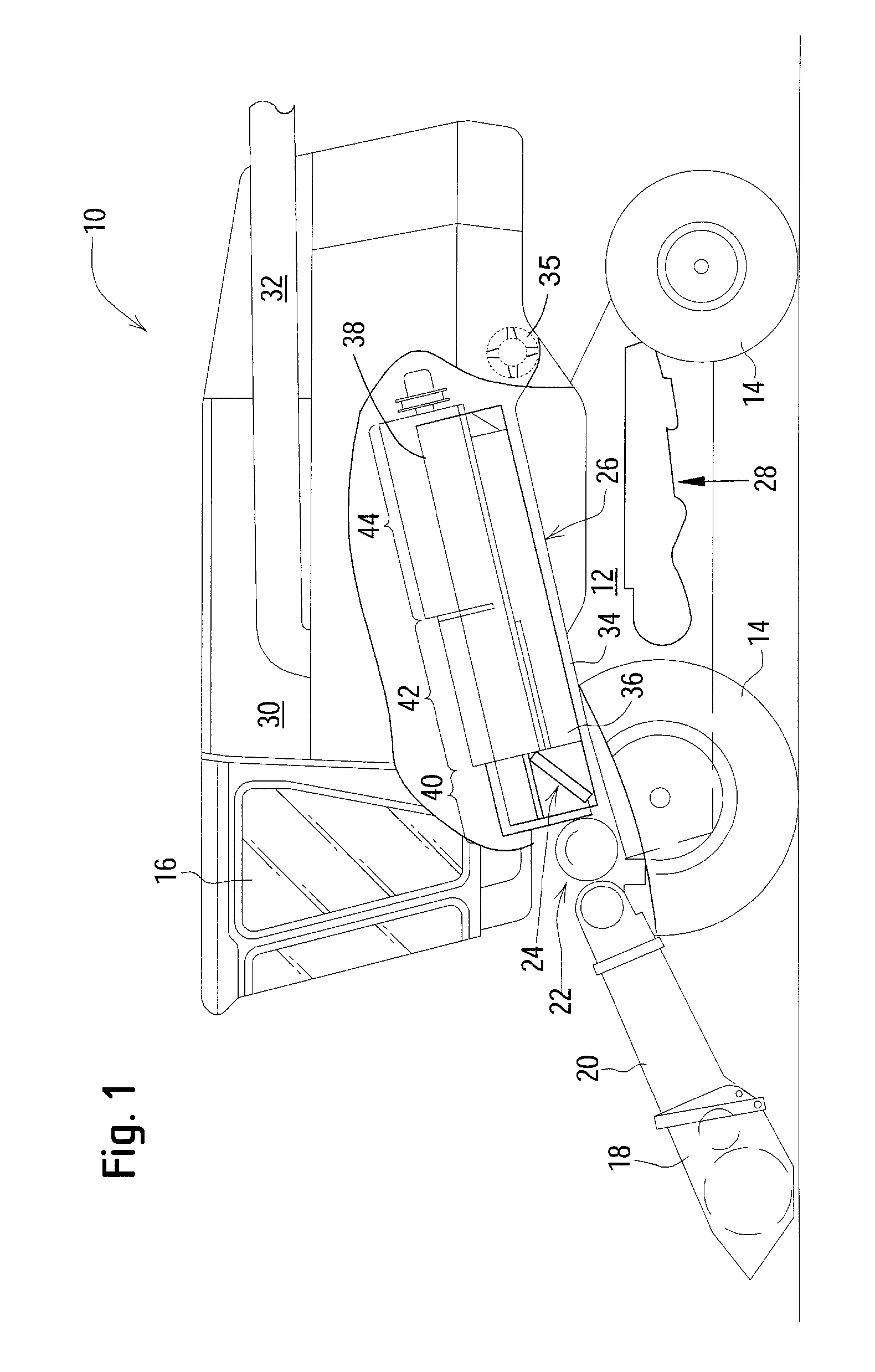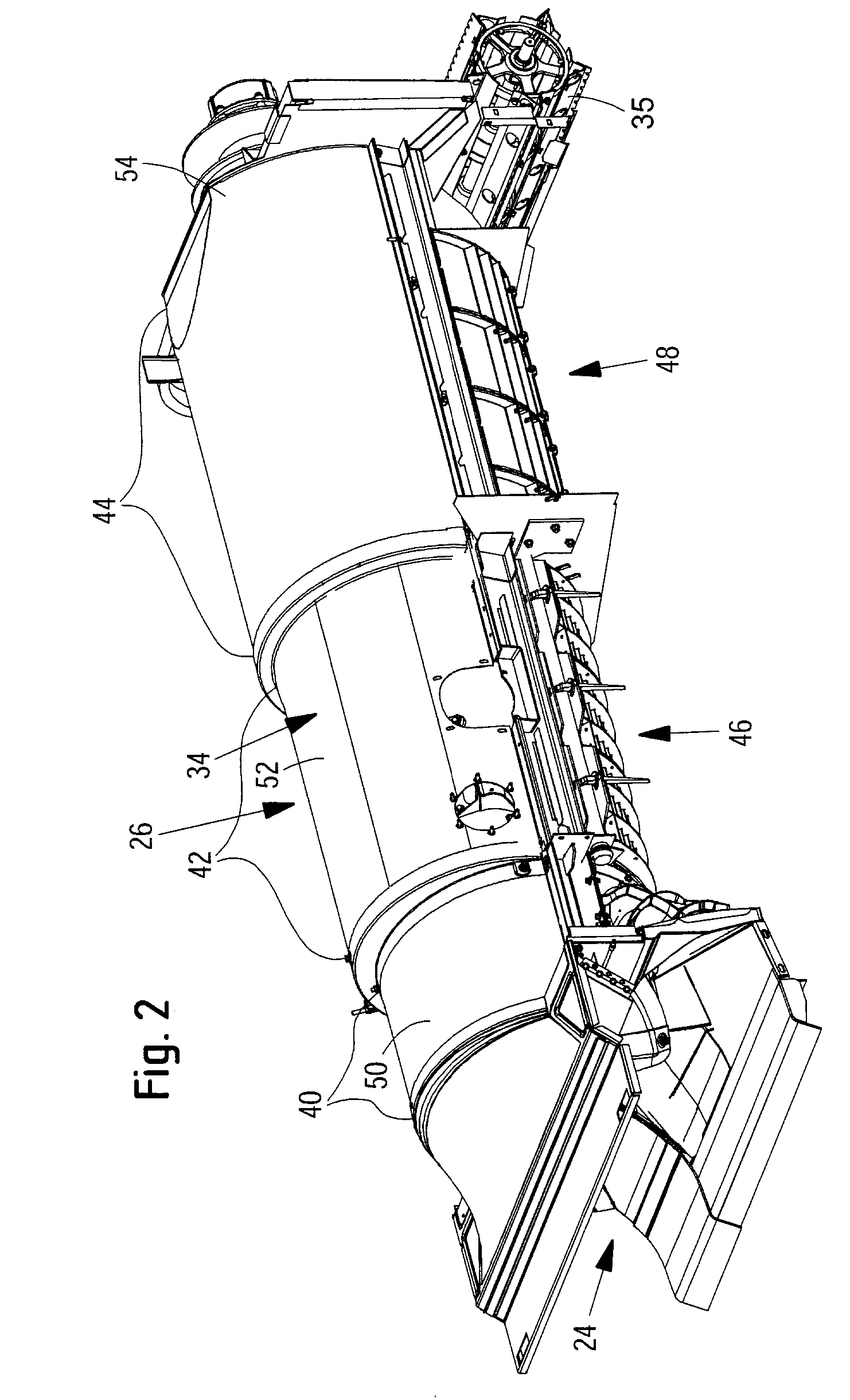Harvested crop processing unit with number of circulation circuits depending on throughput
a technology of circulation circuits and processing units, applied in the field of agricultural combines, can solve the problems of large corn loss to the harvesting process, high cost of technical and operator errors, etc., and achieve the effect of avoiding harvest crop losses, reducing labor intensity, and reducing labor intensity
- Summary
- Abstract
- Description
- Claims
- Application Information
AI Technical Summary
Benefits of technology
Problems solved by technology
Method used
Image
Examples
Embodiment Construction
[0021]Referring now to the drawings, and more particularly to FIG. 1, there is shown an agricultural combine 10 with a supporting structure 12 with wheels 14 in contact with the ground that are fastened to the structure 12. The operation of the combine 10 is controlled from an operator's cab 16. A cutter head 18 is used to cut harvested crop containing corn and to conduct it to a slope conveyor 20. The harvested crop is conducted by the slope conveyor 20 to a guide drum 22. The guide drum 22 guides the harvested crop through an inlet transition section 24 to an axial harvested crop processing unit 26.
[0022]The harvested crop processing unit 26 includes a rotor housing 34 and a rotor 36 arranged within it. The rotor 36 includes a hollow drum 38 to which harvested crop processing elements are fastened for a charging section 40, a threshing section 42 and a separating section 44. The charging section 40 is arranged on the forward side of the axial harvested crop processing unit 26. The...
PUM
 Login to View More
Login to View More Abstract
Description
Claims
Application Information
 Login to View More
Login to View More - R&D
- Intellectual Property
- Life Sciences
- Materials
- Tech Scout
- Unparalleled Data Quality
- Higher Quality Content
- 60% Fewer Hallucinations
Browse by: Latest US Patents, China's latest patents, Technical Efficacy Thesaurus, Application Domain, Technology Topic, Popular Technical Reports.
© 2025 PatSnap. All rights reserved.Legal|Privacy policy|Modern Slavery Act Transparency Statement|Sitemap|About US| Contact US: help@patsnap.com



